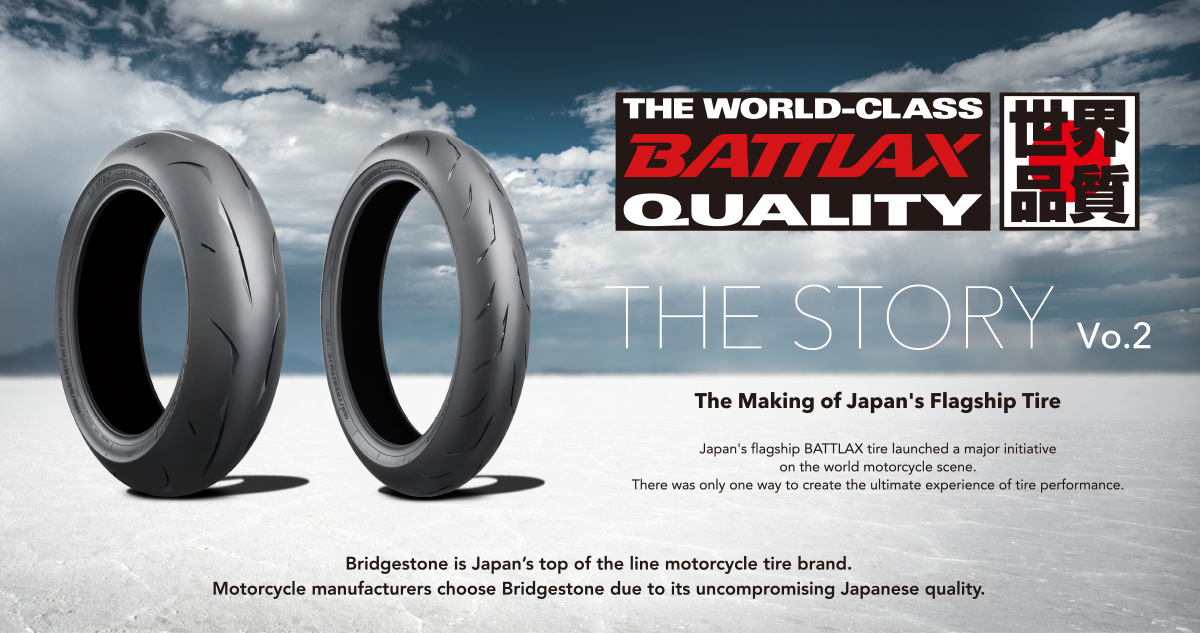

The Ninja H2R/H2, the epitome of Kawasaki Heavy Industries (KHI)
Group technology, an impossible dream without a tire that could withstand super-high speeds.
The tire Kawasaki asked Bridgestone to create..
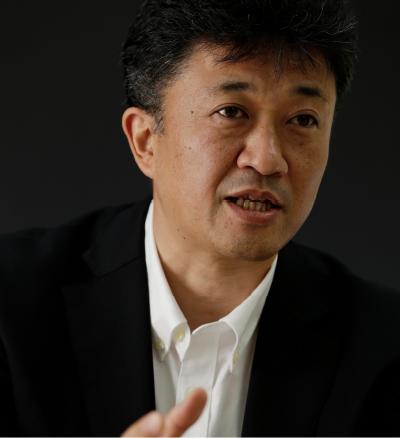
General Manager,
Motorcycle Tire Development Department,
Bridgestone Corporation
Shinji Aoki
Since joining Bridgestone in 1993, has worked as an engineer committed to tire development for motorcycles, joining the
Race Division in 1997, including development of the world’s most demanding motorcycle race tires. Current leader of the design unit working on original equipment tires
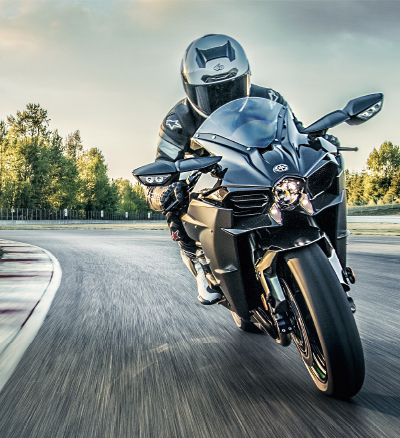
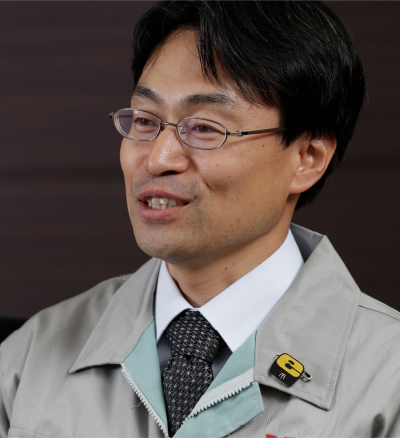
Senior Staff Officer
Section 1
Engineering & Department 1
Research & Development Division
Motorcycle & Engine Company
Kawasaki Heavy Industries, Ltd.
Satoaki Ichi
After extensive experience in motorcycle engine design, Mr. Ichi became the Development Leader of the H2R/H2. He was involved with development of the supercharged engine boasting 1.5 times the existing power output levels with excellent environmental performance.
The Ninja H2R/H2, the bike that broke all the rules of high-displacement sportsbikes.
To realize this high performance, a particular kind of tire was needed for the
development phase.
"At the time, all I had was the top speed data; my honest reaction was 'this is insane!' I think one reason they chose Bridgestone was that we had the technology from MotoGP," says Mr.Aoki. The top speed for MotoGP, the toughest motorcycle race in the world, was slightly over 340km/h at the time, but Kawasaki expected "faster than 350km/h". Bridgestone was heading into completely uncharted territory.
"Testing can't even begin until the prototype is able to run at ultra-high speeds. So we asked Bridgestone to create a tire that would allow us to run driving tests at maximum engine performance," says Mr. Ichi, the H2R/H2 development leader. This is because no existing tire could run at speeds over 350km/hr.
"When we test on an oval track for high-speed laps, you have to tilt the bike on the
banks when the bike hits those high-speeds. The tires start to rub against the banks,
which in turn causes them to really heat up," says Mr. Yamamoto, the test rider.
Bridgestone's solution: the Banking Prototype tire.
" 'Blowing chunks' occurs when the overheating of the tires cause the treads to fall apart. To deal with this, we created the test tire just for banking, specifically for MotoGP, in the same factory that makes MotoGP tires. We were allowed to join in their speed test every time, and checked the temperature after each lap. This is extremely inefficient for running speed tests, but we asked for Mr. Yamashita's help and he delivered," says Mr. Aoki.
The base of the motorcycle was created, and the tires for H2R were selected. The H2R is fitted with Racing Battlax V01 slicks, which are basically the same as the retail versions...
"The V01 are used for super-sportsbikes, but to make sure that we were actually verifying it handle speeds over 300km/h, and to prove it, the evaluation was based on the testing conditions for MotoGP tires. The results we presented were based on such conditions" Mr. Aoki continues.
Following the development of H2R, the focus was shifted to the development of the H2 for public roads. Bridgestone proposed the RS10, which was under development at the time.
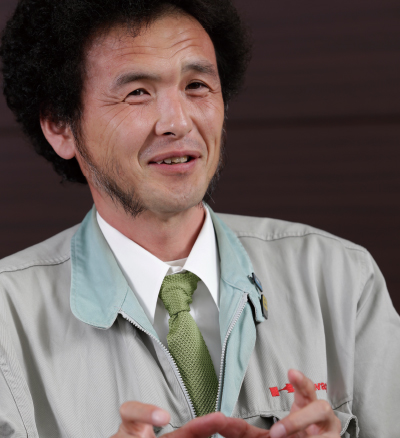
Foreman & Test Rider
Product Evaluation Section
Testing Department
K-TEC Corporation
Shigeru Yamashita
Mr. Yamashita has been a test rider since joining the company in 1989. As a member of the in-house team "Team 38", he is well known as the rider for the Suzuka 8-hour Endurance Race. Also assigned to the Ninja H2R max-speed challenge.
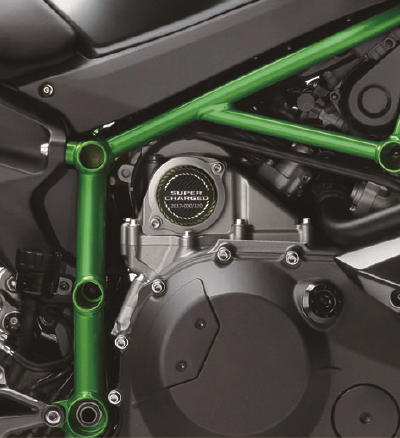
Superchargers changed how tires are made.
Supercharged engines rapidly raised the power and speeds of large displacement sportsbikes; a tire was needed to handle the new level of performance.
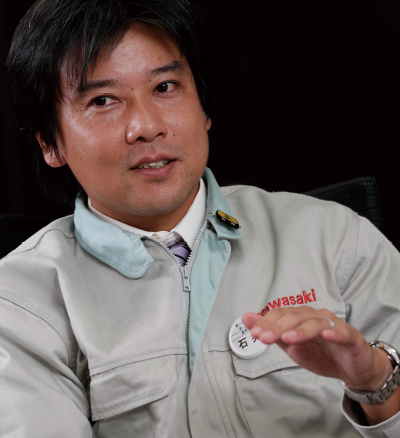
Professional Engineer Jp
(Mechanical Engineering)
Assistant Manager
Section 2, Engineering Department 1
Research & Development Division
Motorcycle & Engine Company
Kawasaki Heavy Industries, Ltd.
Hiroshi Ishii
Worked on H2R/H2 original steel trellis frame for high horsepower /super-high speeds. Focus on tires and suspensions, as well as wide range of expertise including tanks, cowls, and electronic
components.
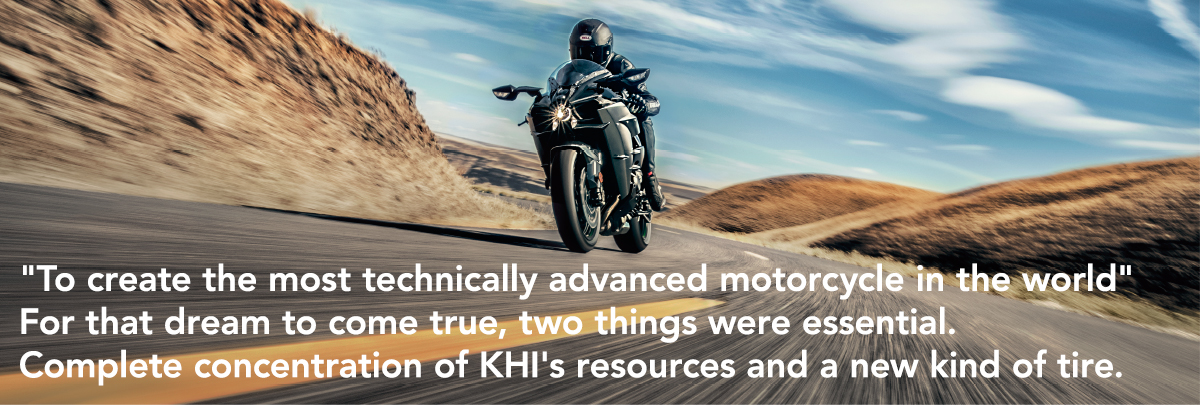
"My first impression of the R10 was its softness. We were developing the H2R/H2 to have a high level of stability, which meant that the tires and the vehicle body itself couldn’t be too rigid or too soft. This is why we asked Mr. Ishii, that the vehicle frame not be too reactive but to bend in just the right way towards the road surface. However, if both frame and tire are overly soft, it becomes very difficult to maintain the balance" says Mr. Yamashita.
Mr. Ishii, the creator of the pipe trellis frame, a special feature of the H2R/H2 says:
"Motorcycles express certain 'behaviors' when the contact pressure of tires are disturbed or if the slip angle is off. However, even if the vehicle body is exhibiting such behavior but the contact pressure is stable, the overall behavior will be smooth. For a supercharged engine that delivers ultra-high speeds like the H2R/H2, this becomes especially important. This is why we used a pipe frame that had a moderate pliancy to it. If we don't have a vehicle body that works smoothly even with some irregular behavior, we won't be able to build a bike that can go over 300 km/h. I am constantly talking about this issue with the Bridgestone rep."
This is how the original equipment (OE) RS10 was tuned in accordance with the H2's specs and handling. Mr. Yamashita, the test rider, especially wanted neutral attributes.
"Both the rubber and the structure itself, are quite different from the retail version of the RS10. Stability was improved by increasing the case rigidity and changing the shape of the rear tire, while the front tire specs are more neutral; it’s actually closer to street use specs. You can say it is specially made for the H2," says Mr. Aoki.
Kawasaki and Bridgestone, two Japanese manufacturers worked closely together to create the Ninja H2 and the RS10. Looking back on the development process, Mr. Aoki had this to say:
"It was just like heading into uncharted territory. In fact, tire technology evolves based on the needs of vehicle manufacturers. The H2R/H2 instantly raised the limits of high-speed range and thanks to that, tire technology also was brought up to a higher level."
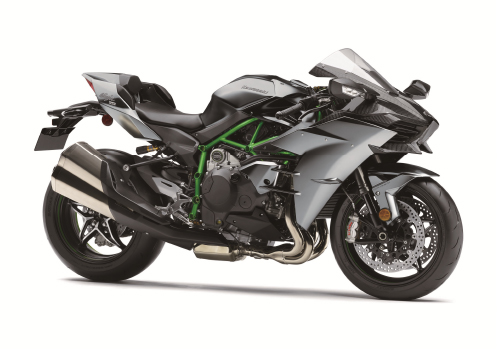
KAWASAKI Ninja H2
Developed by combining the gas turbine, aerospace, robot, and wind-tunnel technologies of KHI. In 2014, the H2R was unveiled at the INTERMOT Cologne Show, the H2 at the EICMA Milan Show.
BATTLAX RACING STREET RS10
The RS10, the original equipment tire (OE) on the H2, which exhibits durability and stability even at speeds over 300 km/h, is tuned for use with a trellis frame and optimized for neutral handling.
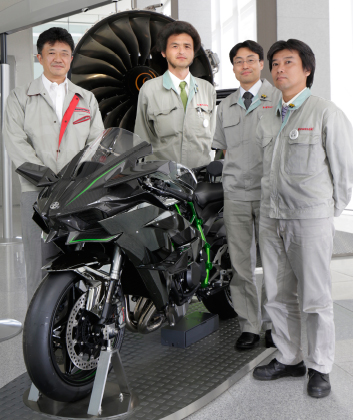
The H2R for closed course boasts a max. output of 310 horsepower and a max speed exceeding 350 km/h. The tire of choice is the Racing Battlax V01 slicks.